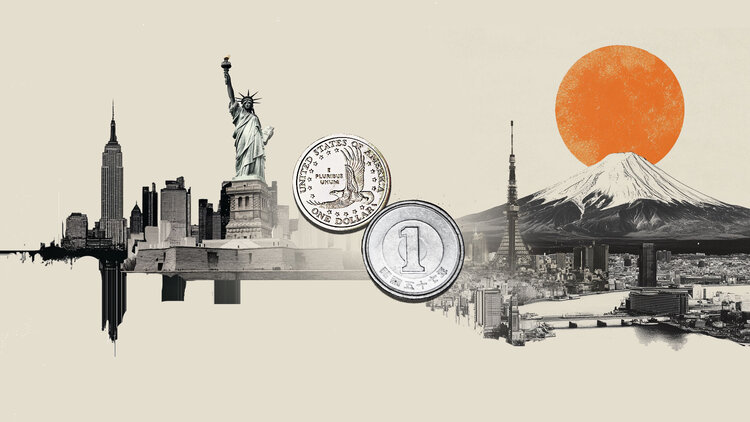The portion sizes of some of your favorite foods are getting bigger and bigger.
Ultra-processed foods and beverages, including chocolate, chips, fast-food burgers and soft drinks, are being sold in sizes up to five times larger than when they were first introduced. The data are from a study December 2021 published in the American Journal of Public Health.
Ultra-processed foods are industrial formulations that usually contain five or more ingredients, and may contain, for example, hydrogenated oils, dyes or flavor enhancers that are not found in other processed foods, according to the “Nova” food classification systemprepared by the Center for Epidemiological Studies in Health and Nutrition at the School of Public Health at the University of São Paulo (USP).
Hershey’s chocolate bars range in size from around 28 grams to 198 grams. (The 198g bar, labeled 8 servings, offers around 1,000 calories.)
The original McDonald’s hamburger – from 1955 – was 45 grams. While the original hamburger size hasn’t changed, today the chain offers two 113-gram burgers in its Double Quartered with Cheese for a total of 226g of beef in a single order. And the fast-food company launched in 2020 a Big Mac Double burger with four burgers and more than 700 calories.
If that calorie count surprises you, consider Burger King’s Triple Cheese Whopper, which has nearly 1,300 calories. “That’s enough calories for a whole day for some people,” said nutritionist and lead author of the study, Lisa Young.
While smaller sizes are still offered, the availability of larger beverage sizes has also increased. Coca-Cola drinks are now sold in different sizes, ranging from around 220ml to 710ml. The original bottle was about 182ml, according to the study.
“It’s no surprise that many of us are overweight because it’s so easy to be overweight,” said Lisa, who is also an adjunct professor of nutrition at New York University. “It’s hard to stick to normal portions when you’re bombarded with these absurd sizes.”
Consuming very large portions on a regular basis, in addition to your individual caloric needs, can lead to obesity and its related health consequences, including heart disease and type 2 diabetes, as well as other conditions such as sleep apnea, osteoarthritis, and gallbladder disease.
About 74% of the US population is overweight or obese, according to the Centers for Disease Control and Prevention (CDC).
Food and beverage ingredients are cheap relative to other expenses like rent, staff, equipment, production and marketing, so it doesn’t cost much for manufacturers to offer a larger portion of food, Lisa explained.
“Consumers are happy because even though they pay a little more for a large portion, they get a lot more food. So it seems like everyone wins, except big portions aren’t good for your waistline.”
Food companies emphasize that customers can choose from a wide range of options.
“Hershey has always offered a wide variety of portion sizes and more tolerable options,” Jeff Beckman, a spokesman for The Hershey Company, said in an emailed response to the study’s findings. “Over the years, we’ve expanded our offerings, including…small snack bars introduced in the 1970s and, more recently, our many ‘thin’ offerings, which give consumers a way to enjoy their favorite Hershey brands in portions.”
“By offering more drinks… in different package sizes, we are giving our consumers more options to choose drinks that suit their lifestyles and needs,” said Ann Moore, a spokeswoman for Coca-Cola.
Burger King and McDonald’s say they offer a variety of portion sizes on their menus and include nutritional information for menu items.
“When we say to our customers ‘Do it your way’ – we mean it … and the nutritional information for every menu item is readily accessible and easy to understand – our online nutrition tool allows customers to search, filter and identify menu options quickly and easily,” a Burger King spokesperson said via email.
McDonald’s also offers a variety of portion sizes in its options menu to customers, according to an emailed company statement to CNN . “McDonald’s USA is committed to transparency and providing information to customers so they can make the right choices for them.” The company posts calories on menus and provides ingredient and nutrition information on the company’s website, app and in-restaurant kiosks.

portion distortion
When you receive larger portions or buy foods in larger sizes, you can assume that the amount you are getting is the amount you should be eating.
“We think (the amount we received) is a reasonable amount because ‘that’s what I bought’ or ‘that’s what I was presented,’” Lisa said.
This thinking puts people at risk of ignoring internal signs of satisfaction, which intuitively help determine when you’ve had enough. In fact, when people are given larger portions, they consistently consume more food and drinks than when they are offered smaller offerings, the research found. Psychologists call this overeating behavior portion size effect .
“If you eat 100 calories of your favorite chocolate every day, nothing will happen,” Lisa said. “It’s when you have huge portions of meals and snacks and drinks… that can easily lead to weight gain. That’s why we have an obesity crisis in our country. You don’t have to look any further than these portions of unhealthy foods.”
And the larger the serving, the more calories, sodium, saturated fat, and sugar you end up consuming too.
Mastering portion control
Here are some tips to help reduce portions and improve health:
Limit portions of ultra-processed foods, which are some of the most common culprits when it comes to large portions, according to the study.
Here are other ways to combat portion distortion according to Lisa Young:
Chocolate: Whenever possible, buy the smallest size. “You can eat the size of half an ounce [14g] Halloween all year round,” Young said. If you buy a size larger, treat yourself to one or two squares a day.
French fries: Order the lowest offering on the menu or share the order and choose a vegetable as an additional side dish.
Soft drink: When you’re out and about, get the smallest size available. If you’re at home, pour the drink into a 230ml glass – or if you have a 590ml glass, fill it halfway with ice.
Cereal: Avoid eating straight out of the box. Pick up the cereal with a 1-cup measuring cup, then pour it into a bowl. This can help visualize what 1 cup will look like.
Burgers: “Make it your meat for the day and make your dinner plant-based, like a bowl of quinoa, a salad, or a bowl of veggies,” Lisa advised.
Chips and Snacks: Single serving packs are best for portion control. You can also use a measuring cup to divide larger packages, but be sure to put the bag away after you’re done.
Bagels and muffins: “These things are tremendous; a typical bagel is 5 ounces [141g]a typical muffin is 7 ounces [198g]” said Lisa. Try cutting one in half and reheating the leftovers in the toaster the next day.

visual cues
Fill your plate with more fiber-rich foods, especially fruits and vegetables. They increase satiety and offer beneficial nutrients.
Order half portions at restaurants, especially with pasta. Don’t assume that a single bottle or packet is the amount you should be consuming.
“A soda must have 8 ounces [cerca de 230ml]. If you have a pint-sized soda, you’re drinking four sodas,” Lisa said.
Still having trouble determining the proper portion sizes? Consider these size equivalents as a visual guide:
Baseball: 1 cup of fruit or vegetables; 1 cup cereal, pasta or rice
hockey puck: 1⁄2 cup pulses, hummus, oatmeal or cooked beans or tomato sauce
Deck of cards: 85 grams of salmon, chicken or meat
4 dice: 28 grams of cheese
Cap in a 470 ml water bottle: 1 teaspoon oil, sauce, sugar or honey
golf ball: 1⁄4 cup nuts or seeds
shot glass: 2 tablespoons oil or salad dressing
Dental floss container: 28 grams of chocolate or a cookie
Source: “Finally satisfied, finally thin” by Lisa Young
Lisa Drayer is a nutritionist, author, and health and nutrition contributor for CNN.
Source: CNN Brasil







